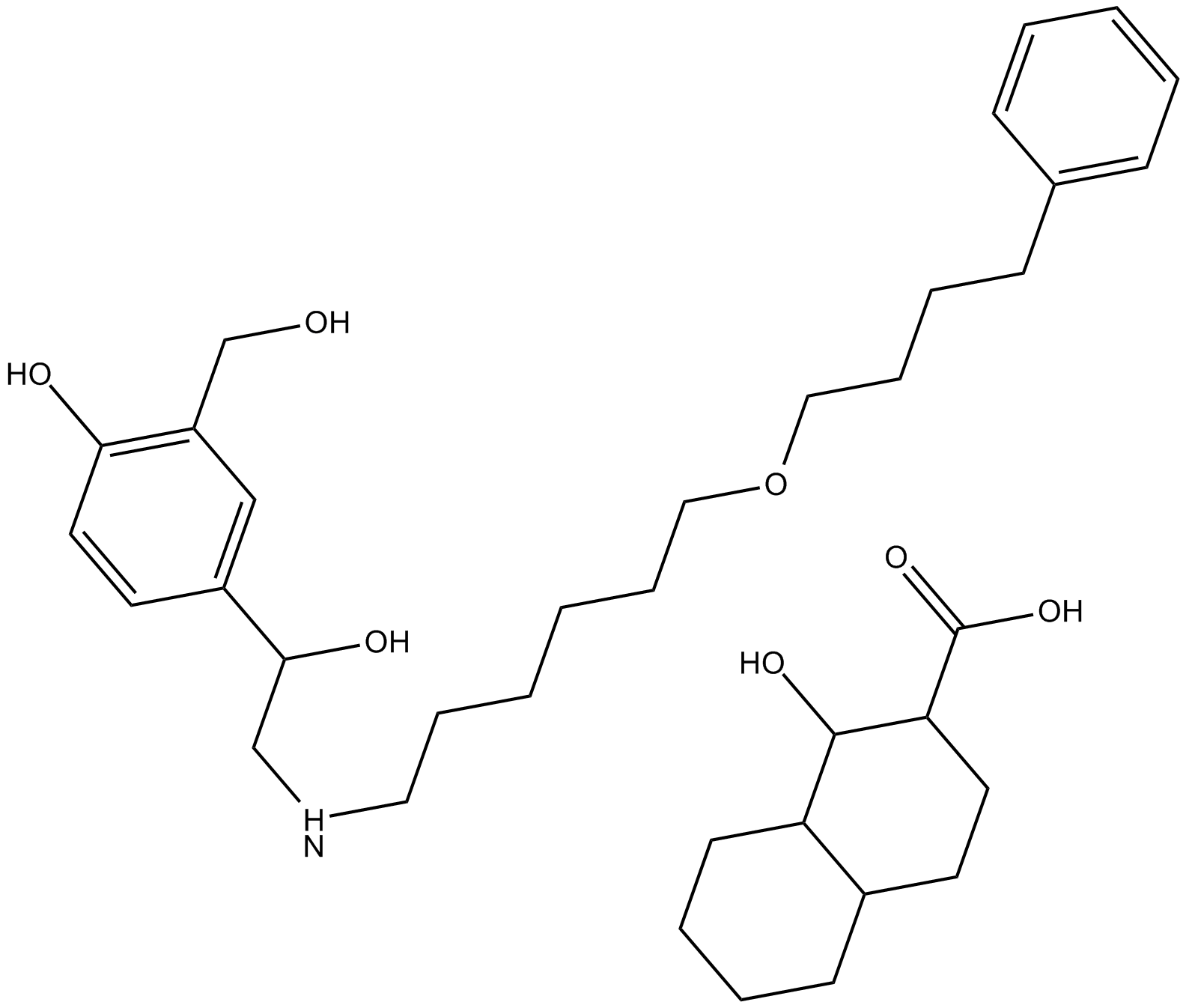Salmeterol xinafoate (Synonyms: GR33343G) |
| Catalog No.GC11531 |
A long-acting β2-adrenergic receptor agonist
Products are for research use only. Not for human use. We do not sell to patients.

Cas No.: 94749-08-3
Sample solution is provided at 25 µL, 10mM.
β2-adrenergic receptor agonists are a class of drugs acting on the beta2-adrenergic receptor, thereby causing smooth muscle relaxation, which results in dilation of bronchial passages, vasodilation in muscle/liver, relaxation of uterine muscle and release of insulin. Salmeterol xinafoate, as a long-acting beta2-adrenergic receptor agonist, is clinically prescribed for the treatment of asthma, chronic obstructive pulmonary disease (COPD) and other pulmonary disorders. It was previously marketed as a dry powder inhaler in the US and is still available in the UK market.
In vitro: In a previoius study, it was found that salmeterol could reduce retinal Müller cell death through the inhibition of the phosphorylation of IRS-1(Ser307). In addition, the findings also suggest the importance of IRS-1 in beta-adrenergic receptor signaling in the prevention of cell death in retinal Müller cells [1].
In vivo: A previous animal study showed that salmeterol significantly decreased the production of pro-inflammatory cytokines in a model of allergen-challenged mice, which expressed tumor-necrosis factor-alpha, interleukin-1 and interleukin-6. Moreover, it was found that salmeterol could reduce the inflammation caused by lipopolysaccharide in activated murine bone marrow-derived dendritic cells (DCs). Therefore, this study suggested that salmeterol regulated the inflammation of allergen-induced asthma by modulating DCs, providing evidence that DCs were the target immune cells responsible for the action of salmeterol against asthma [2].
Clinical trial: In an early clinical investigation, it was found that salmeterol was significantly better than disodium cromoglycate in improving both morning and evening PEF [3]. A recent Phase-2 clinical trial, named “Dose-Ranging Study of the Salmeterol Component of Fluticasone/Salmeterol Spiromax Compared to Fluticasone Spiromax and Advair Diskus in Asthma Subjects”, was conducted in the US to evaluate the dose response, efficacy and safety of salmeterol combined with fluticasone for the treatment of persistent asthma.
References:
[1] Walker RJ, Anderson NM, Bahouth S, Steinle JJ. Silencing of insulin receptor substrate-1 increases cell death in retinal Müller cells. Mol Vis. 2012;18:271-9
[2] Hu Z, Chen R, Cai Z, Yu L, Fei Y, Weng L, Wang J, Ge X, Zhu T, Wang J, Bai C. Salmeterol attenuates the inflammatory response in asthma and decreases the pro-inflammatory cytokine secretion of dendritic cells. Cell Mol Immunol. 2012;9:267-75.
[3] Bousquet J, Aubert B, Bons J. Comparison of salmeterol with disodium cromoglycate in the treatment of adult asthma. Ann Allergy Asthma Immunol. 1996;76:189-94.
Average Rating: 5 (Based on Reviews and 30 reference(s) in Google Scholar.)
GLPBIO products are for RESEARCH USE ONLY. Please make sure your review or question is research based.
Required fields are marked with *




















